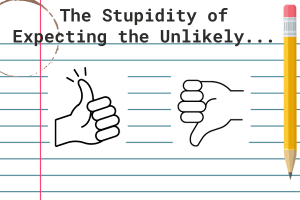 Smart investors should keep in mind that there is perhaps no more seductive trap for the investor and entrepreneur alike than attributing magical powers to new technologies and new products which give them the ability to cast a spell over customers and make them change their behavior. Rohit Bhargava has written a great piece called The 4 Principles of Delusional Economics. Start-up investors and entrepreneurs should give it a read because it illustrates an absolutely key concept - a product won’t magically change customer behavior - instead the product must create conditions which make wanting to change behavior the rational thing to do.
Smart investors should keep in mind that there is perhaps no more seductive trap for the investor and entrepreneur alike than attributing magical powers to new technologies and new products which give them the ability to cast a spell over customers and make them change their behavior. Rohit Bhargava has written a great piece called The 4 Principles of Delusional Economics. Start-up investors and entrepreneurs should give it a read because it illustrates an absolutely key concept - a product won’t magically change customer behavior - instead the product must create conditions which make wanting to change behavior the rational thing to do.
The core point Rohit makes is that a growing number of start-ups expect some unreasonable behavior change or act of altruism from their customers as the foundation for their business’ success. Investors should learn how to recognize the pattern and steer clear of the thinking.
He outlines four principles of delusional economics which I have recast below:
- Expecting Your Customer’s Worldview To Change. A person’s world view affects everything they do and expecting them to change it is a waste of time and effort. Consumer behavior is really hard to change. Consumer beliefs, virtually impossible.
- Expecting People to Pay For Something That Is Currently Free. When a good or service has been free for a while it skews people’s perception of its value and it permanently affects their expectation about their right to it. Getting them to pay is a lot of work and requires a really differentiated product.
- Building a Business Model on Revenue From Non-Existent Advertisers or Customers. Like Rohit, I see far too many start-ups who are naive about how many advertisers they can attract and what they will pay. You will often see these start-ups talking about their product and how they know their customers. But if their model is advertising supported, they have it all wrong – advertisers are the customers who are going to pay the bills and they should be as focused on getting them to pay up as they are on their product and the eyeballs. (Yes, it is all inter-related, but I am sure you take my point…)
- Overestimating the Customer’s Ability to Appreciate and Pay for the Value. I just had an exchange with an entrepreneur on this today. Rohit focuses his point on the fact that customers are generally not that good at detecting value. In my discussion with the entrepreneur, I took it to the next step, chiding the entrepreneur that it was their responsibility to really communicate that value clearly. If the differences are subtle and the proof of superiority only comes with use, then the company is going to have to figure out a bold way to communicate it or they are stuck. Subtle differences and evolutionary improvements do not translate into scalable repeatable sales models.
Worth a skim for both investors and entrepreneurs. Full text here.

